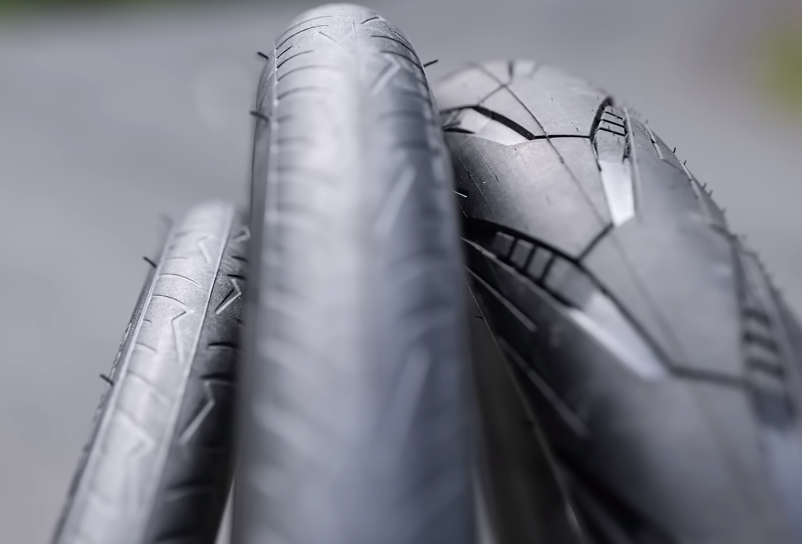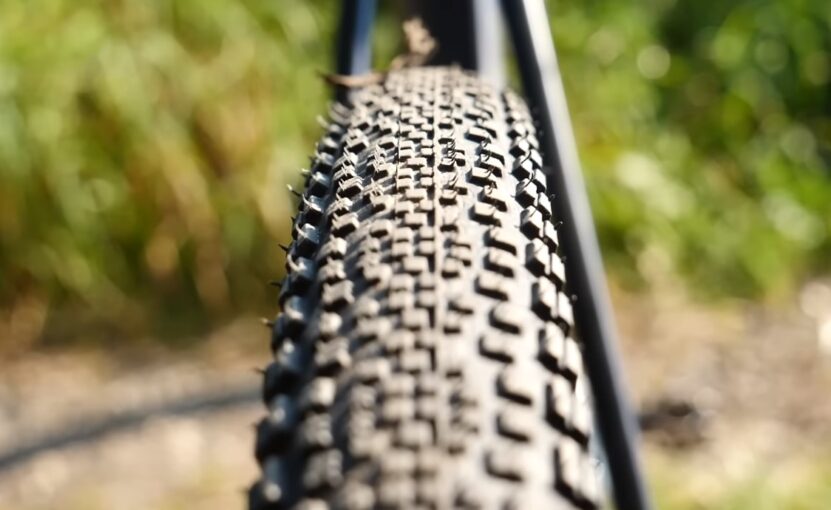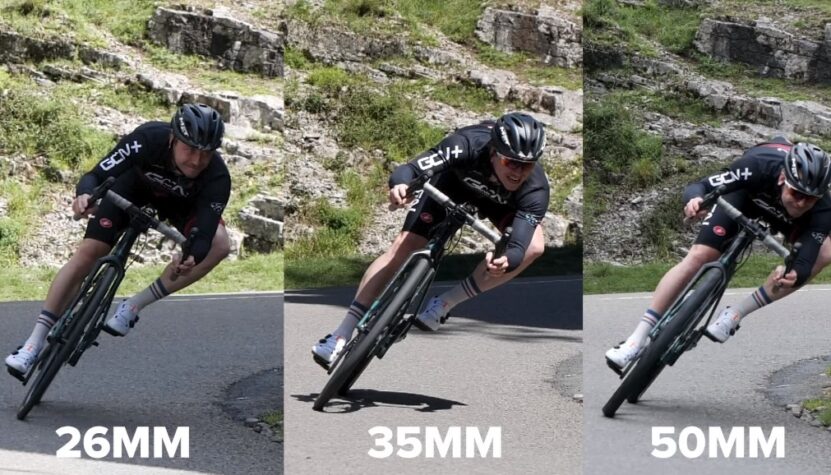Biking is an activity that has many health benefits. It helps to tone your muscles, improve your cardiovascular system, and lose weight. Biking is also a great way to explore the outdoors and see new sights.
One of the most important aspects of biking is having the right tires. The wrong tires can make biking much more difficult, and even dangerous. This is especially true for heavy riders.
Bike Tires For Heavy Riders

Bike tires are one of the most important parts of your bike, and if you’re a heavy rider, you need to be extra careful when choosing the right ones. There are a few things to consider when choosing bike tires for heavy riders.
First, you need to think about the type of riding you’ll be doing. If you’re mostly going to be riding on pavement, you’ll want to look for tires that are designed for that type of surface.
However, if you’re going to be riding off-road or on other rough terrains, you’ll need to choose tires that can handle those conditions.
Second, you need to think about the size of the tires. If you’re a heavy rider, you’ll need to choose tires that are wider than average. This will give you more contact with the ground, which will provide more traction and stability.
Third, you need to think about the tread on the tires. If you’re going to be riding in wet or icy conditions, you’ll want to choose tires with a more aggressive tread. This will help you avoid slipping and sliding on the road.
Finally, you need to think about the price. Bike tires can range in price from a few dollars to hundreds of dollars. If you’re a heavy rider, you’ll likely need to spend more money on tires than someone who is lighter.
However, it’s important to find tires that fit your budget and meet your needs.
Tire Types

There are three main types of bike tires available on the market: clincher, tubular, and tubeless. Each has its own advantages and disadvantages that you’ll need to consider before making a purchase.
Clincher Tires
Clincher tires are the most common type of bike tire. They’re easy to install and replace, and they’re compatible with most wheelsets. Clincher tires also have good puncture resistance, making them a good option for riders who are worried about flats.
The downside of clincher tires is that they can be heavier than other types of tires, and they don’t always provide the same level of ride quality. Additionally, clincher tires can be more difficult to install than other types of tires.
Tubular Tires
Tubular tires are typically used by racing cyclists. They’re lighter than clincher tires and offer a smoother ride, but they’re also more expensive and difficult to install.
Additionally, tubular tires don’t have the same level of puncture resistance as clincher tires, so they’re not a good option for riders who are worried about flats.
Tubeless Tires
Tubeless tires are becoming increasingly popular, especially among mountain bikers. They offer the same weight savings and ride quality as tubular tires, but they’re easier to install and have better puncture resistance.
Additionally, tubeless tires can be used with standard wheelsets, making them a more versatile option.
Knobby Tire
The knobby tire is the most common type of mountain bike tire. It’s designed for use on rough, uneven terrain, and it offers good traction and control.
The downside of knobby tires is that they can be slower on smooth surfaces, and they’re not a good option for road riding.
Anatomy Of Road Bike Tire

All road bike tires have an inner tube that is sealed with air pressure. The air pressure keeps the tube from expanding and allows the rider to change the shape of the tire to match the terrain.
The inner tube is surrounded by a carcass, which is made up of several layers of fabric. The carcass provides the structure for the tire and keeps the tube from expanding. The outermost layer of the carcass is the tread, which is designed to provide traction on the road.
The width of the tire is determined by the width of the rim. The width of the rim determines the size of the contact patch, which is the area of the tire that touches the ground.
The width of the tire also affects the rolling resistance of the tire. The wider the tire, the higher the rolling resistance. The rolling resistance is the force that is required to keep the tire moving forward.
The weight of the bicycle and rider determines the pressure that is required in the tires.
The pressure is measured in pounds per square inch (PSI). The pressure in the tires must be high enough to support the weight of the bicycle and rider, but low enough to allow the tire to deform when it hits a pothole or other object on the road.
The construction of the tire determines its durability. The more plies in the carcass, the more durable the tire. The number of plies is usually indicated on the sidewall of the tire. The higher the number of plies, the more expensive the tire.
Changing The Valves In Your Bike Tires

One of the most important things you can do to prolong the life of your bike tires is to regularly check and, if necessary, change the valves. A valve that is not functioning properly can cause a slow leak in your tire, which can eventually lead to a flat.
Even if you have never changed a valve before, it is a relatively simple process that anyone can do with a few basic tools.
The first thing you will need to do is remove the old valve from the tire. To do this, simply unscrew the cap from the valve stem and then use a pair of pliers to pull the entire valve out of the tire.
Once the old valve is removed, take a look at the new valve to familiarize yourself with the parts.
Next, you will need to insert the new valve into the tire. Start by screwing the cap onto the valve stem. Then, use your fingers to push the valve stem through the hole in the tire until it is protruding about an inch on the other side.
Finally, use a pair of pliers to firmly grip the base of the valve stem and twist it clockwise until it is tight. Once the new valve is in place, screw the cap back on and inflate the tire to the proper pressure.
With just a few simple steps, you can easily change the valves in your bike tires and help ensure that they will remain in good condition for many miles to come.
Bike Tire Inflation
Bike tire inflation is important for several reasons. First, properly inflated tires offer optimal contact with the road surface, providing better traction and handling.
Second, inflated tires help to prevent flats by evenly distributing the weight of the rider and bike. Third, inflated tires reduce rolling resistance, making it easier to pedal.
Finally, inflated tires improve safety by reducing the chance of a blowout.
Anatomy Mountain Bike Tire
Mountain bike tires are designed to provide good traction and grip on a variety of surfaces, including dirt, mud, rocks, and roots. They typically have knobby tread patterns that can bite into soft surfaces to improve traction.
The width of mountain bike tires varies according to the type of bike and the riding conditions.
Mountain bike tires are usually wider than road bike tires, with widths ranging from 2.0 inches to 2.5 inches. Some mountain bike tires are even wider, up to 3.0 inches. The extra width provides more traction and stability on rough surfaces.
Mountain bike tires are available in different tread patterns. Some have large, widely spaced knobs that provide a good grip on soft surfaces like dirt and mud. Other tread patterns have smaller, closely spaced knobs that work well on hardpacked trails and dry conditions.
Mountain bike tires are typically made from rubber compounds that are designed to provide good grip and traction. The durometer, or hardness, of the rubber, varies according to the type of terrain the tire is designed for.
Softer rubber compounds provide better grip on soft surfaces like dirt, while harder compounds roll faster on hardpacked trails.
Mountain bike tires are usually tubeless, meaning they don’t have an inner tube. This design reduces weight and rolling resistance and also helps to prevent flats.
Tubeless tires can be used with a tubeless-compatible rim, or with a conventional rim and tubeless-specific tire sealant.
Mountain bike tires come in a variety of sizes. The most common size is 26 inches, but 29er and 27.5-inch tires are also available.
Tire widths range from 1.9 inches to 2.5 inches. mountain bike tires are also available in plus size, which has wider widths ranging from 2.8 inches to 3.0 inches.
Mountain bike tires are an important part of the equation when it comes to performance. The right tire can make a big difference in traction, rolling resistance, and weight.
Choose the right mountain bike tire for your riding conditions and terrain to get the most out of your ride.
Mountain Bike Tire Puncture Protection
The Mountain Bike Tire Puncture Protection is a device that helps to prevent flats on your mountain bike tires. It consists of a tubeless tire, an airtight sealant, and a puncture-resistant liner.
The tubeless tire is inflated with the airtight sealant, which seals any punctures that may occur. The puncture-resistant liner protects the tubeless tire from punctures.
The Mountain Bike Tire Puncture Protection is easy to install and use. It does not require any special tools or knowledge.
Simply inflate the tubeless tire with the airtight sealant, and ride your bike as usual. The puncture-resistant liner will protect your tires from flats.
The Mountain Bike Tire Puncture Protection is an affordable way to protect your tires from flats. It is a great investment for any mountain biker.
Final Verdict
The Mountain Bike Tire Puncture Protection is a great way to prevent flats on your mountain bike tires. It is easy to install and use, and it is an affordable way to protect your tires.
If you are looking for a way to prevent flats, the Mountain Bike Tire Puncture Protection is a great option.

